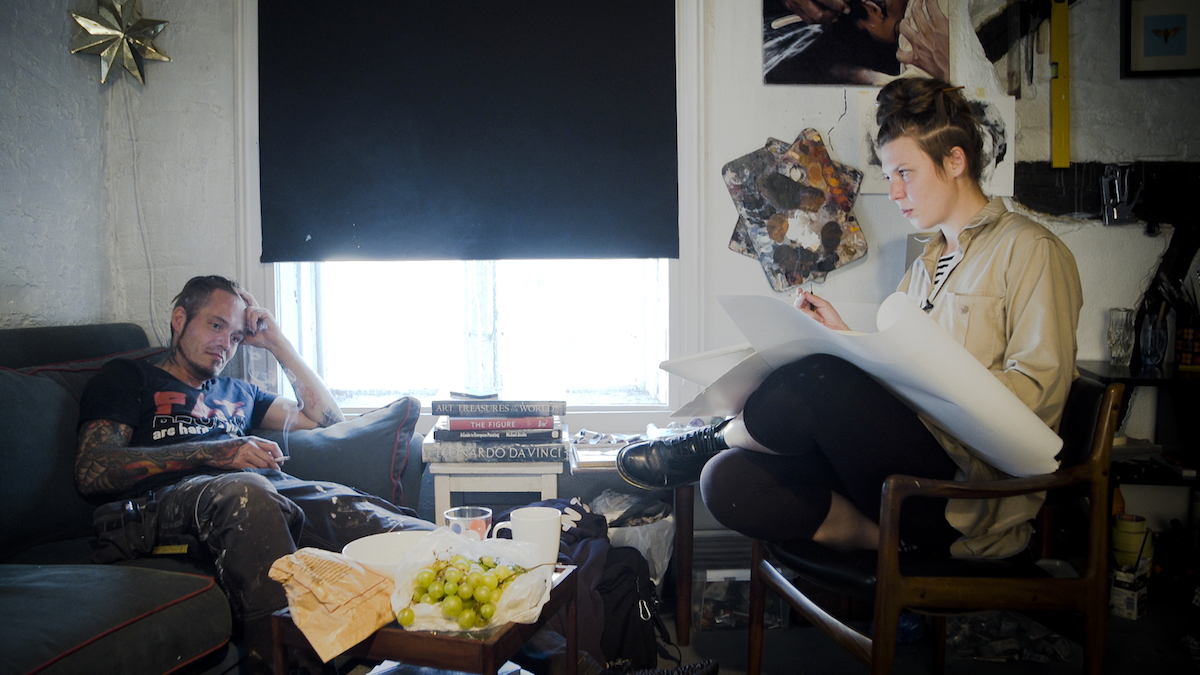‘The Painter and the Thief’: Film Review
By Peter Debruge
LOS ANGELES (Variety.com) – Incredible. That’s the word that comes to mind with Benjamin Ree’s “The Painter and the Thief,” a stranger-than-fiction friendship story in which vérité techniques produce unbelievable results. I don’t mean to imply that this astonishing documentary isn’t truthful. Rather, I’m in awe of how things played out, and fully aware that there was a certain amount of manipulation — not necessarily of the facts, but certainly in the way they’re presented — required to produce
By the director’s own account, at the beginning of what would prove to be a three-year journey, Ree knew only that he wanted to make a film about an art heist (he started the project after the premiere of his 2016 chess-champ doc “Magnus”). Ree’s research led him to Czech artist Barbora Kysilkova, who had recently moved to Oslo, where two massive works were taken from the window of her first solo show in Norway.
The film begins with time-lapse footage of Kysilkova painting “The Swan Song,” a haunting nature morte in which a white bird lies dead in tall dark grass. Then it shows surveillance footage from within the gallery, as two men with pixelated faces break in and make off with a pair of canvases. What happened next was the thing that captured Ree’s attention: In court, Kysilkova approached the thief who had been put on trial, a junkie named Karl-Bertil Nordland, and asked if he would agree to pose for a portrait (his accomplice is strategically left out of the picture).
The film isn’t clear about the verdict, focusing instead on the connection between the two title characters. Was this some form of forgiveness on her part or a strategy to recover the missing paintings? And did she really expect a man with the words “Snitchers Are A Dying Breed” tattooed across his chest to come clean about what he’d done with the stolen artwork?
Ree and editor Robert Stengård don’t give us all the information we might need to form a clear understanding of their subjects’ actions, yet their approach is not only more artistic but somehow more representative of real life: People’s motives — and surely those of addicts and artists above all — can be paradoxical and counterintuitive, and though the situation begs some amount of psychological analysis, one senses that both parties are acting on instinct to a large degree.
“The moment I have met him at the court room, I really sort of fell in love with him,” Kysilkova tells her husband, Øystein Stene (another fascinating character, who likens supporting her connection to Nordland to letting a child play in traffic). The notion that her spouse should have a say in how she seeks artistic inspiration may sound narrow-mindedly patriarchal, but Kysilkova clearly has a history of encouraging unhealthy relationships — including an abusive ex-boyfriend — and though she permits Ree’s cameras to film a relationship counseling session with her husband, questions remain about their dynamic.
What appears to be a noble act on her part — refusing to see this ex-con as a thief, insisting on capturing a different aspect in her portraits of him — may actually be a continuation of a self-destructive pattern. There’s a tortured and obsessive quality to her work that aligns with his personality as well, and a vulnerability that both show the camera that makes it possible for Ree to explore the commonalities between them. “I really feel like I’m a painting junkie,” Kysilkova admits, and given what we see of her method, one wonders whether she might benefit from some kind of intervention. (What influence, if any, did the filmmakers have in her decisions?)
Kysilkova may have spared Nordland a prison sentence, but he’s still capable of potentially dangerous behavior. Less than 30 minutes into the film, something extreme happens that lands him in the hospital with a broken hip, and instead of pulling away, Kysilkova becomes directly involved in his physical therapy. At this point, the film backtracks to the beginning and replays things from Nordland’s point of view, a tricksy structural choice that amplifies the film’s capacity to surprise. As Nordland puts it, “She sees me very well, but she forgets I can see her too,” before sharing insights that had been withheld from us until now.
When Ree first started filming, he couldn’t have known where this story would lead, and in order to re-create that sense of unpredictability, he uses a time-bending nonlinear structure and various sleight-of-hand techniques to deliver information when it’s most effective. Cameras were present for several unforgettable moments, as when Kysilkova unveils her first large painting of Nordland for him to see, capturing his genuinely shaken reaction as he absorbs what it means to be immortalized by a woman he had wronged. And they tag along as Kysilkova makes what is almost certainly documentary history: An artist plans a heist to steal back her missing work.
To get the desired emotional reaction, “The Painter and the Thief” proves able to deceive in ways that are best discovered for yourself. It works: In a genius final stroke, Ree pulls back to reveal the entire canvas, putting key aspects of this unconventional portrait into startling new perspective.

